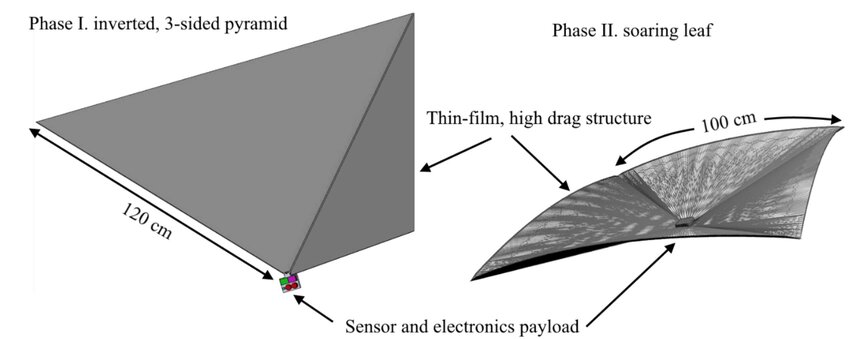Create a free profile to get unlimited access to exclusive videos, sweepstakes, and more!
NASA blows funds into new "LEAVES" mini-spacecraft bound for Venus atmosphere

Born out of the winds of imagination, an innovative new project to deliver a swarm of tiny spacecraft for investigating the dense atmosphere of Venus just received an encouraging financial boost of funding dollars from NASA in the amount of $500,000.
According to a NASA press release, Ohio Aerospace Institute (OAI) scientists engineered these diminutive soaring sensors that they've appropriately named Lofted Environmental and Atmospheric Venus Sensors (LEAVES), which will be scattered towards Venus like cosmic kites, then transmit data back to Earth.
Though the idea might sound a bit far-fetched, the space agency believes this concept could rake in rewards due to the mission's low-cost and expendable nature when considering the hostile components of the upper and middle Venusian atmosphere and the neighboring world's absurdly high surface air pressure.
Researchers who've presented LEAVES as a viable project explained that the high-tech machines would fall from an orbital spacecraft and gently drift down through the hazardous sulfuric acid clouds.
During their descent, each miniature sensor platform would detect any chemicals and compounds found and relay that info back to the orbiting probe. As a result of the perilous nine-hour plummet, this flight will end in their demise, caused by falling too low for meaningful data to be derived or eventually disintegrating via the planet's toxic levels of carbonyl sulfide, hydrogen sulfide, and sulfur dioxide.
As described in the press release, "With a per-unit mass of only 130 g, this concept is ideal as a secondary payload or enhancement for a Venus orbit-targeted mission and is capable of obtaining key data about the dynamic state and composition of Venus' atmosphere that is difficult to access with remote techniques. This Phase II effort will mature the Phase I findings by engaging in high-fidelity aerothermal simulations of orbital deployment, capture, and flight, and will allow practical demonstrations of improved approaches to communications, tracking, and structural configurations."
NASA's awarded funds will help Jeffrey Balcerski and his Cleveland-based OAI team refine their "swarm" proposal and allow for additional development of the technology in anticipation of being chosen for an actual mission to Venus in the near future in search of microbial life amid its poisonous cloud cover.
This is all part of NASA's $5 million support of early-stage, unorthodox presentations to help foster novel approaches to space exploration and is one of only seven studies selected by the NASA Innovative Advanced Concepts program.
“Creativity is key to future space exploration, and fostering revolutionary ideas today that may sound outlandish will prepare us for new missions and fresh exploration approaches in the coming decades,” said Jim Reuter, associate administrator for NASA’s Space Technology Mission Directorate (STMD).
















